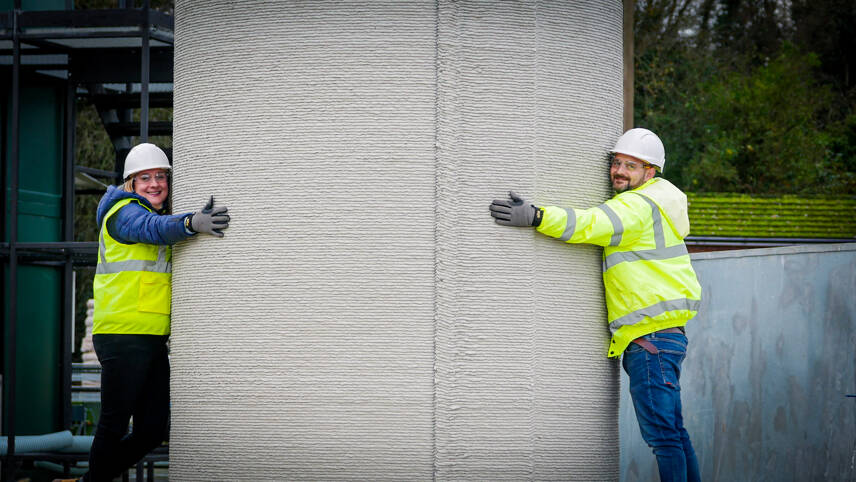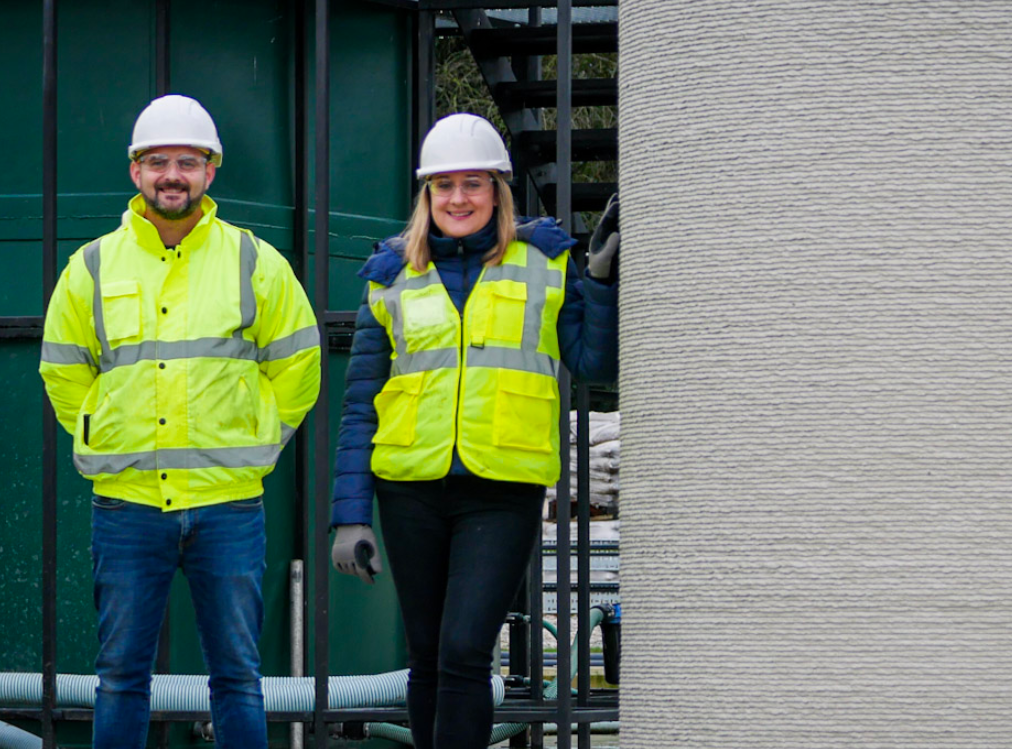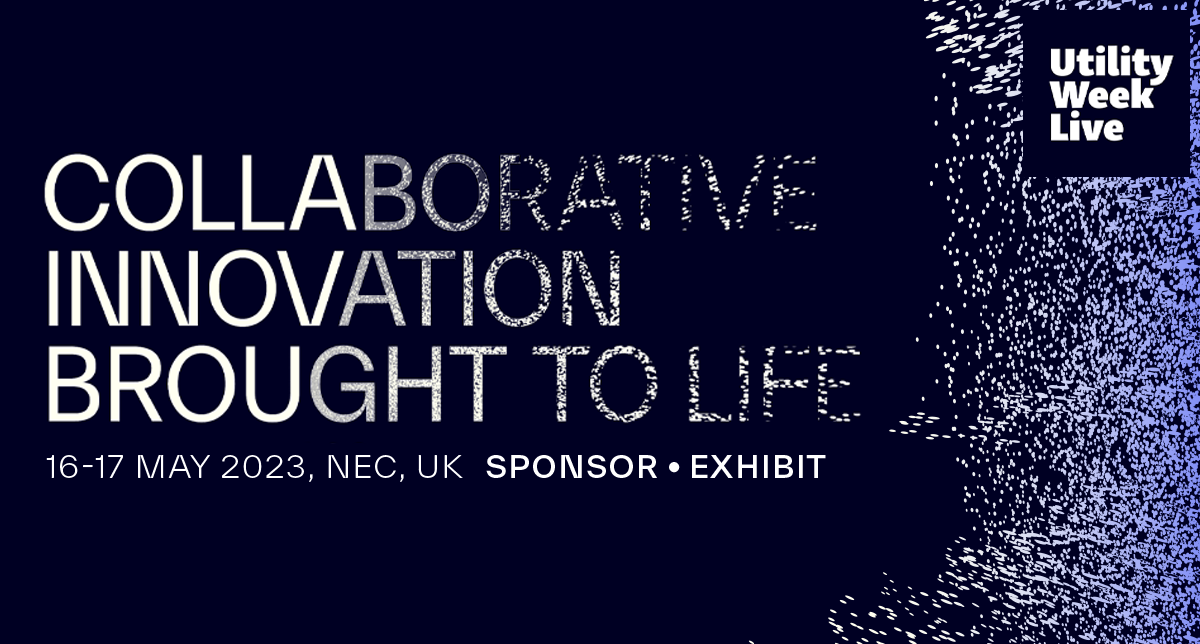You’ve reached your limit!
To continue enjoying Utility Week Innovate, brought to you in association with Utility Week Live or gain unlimited Utility Week site access choose the option that applies to you below:
Register to access Utility Week Innovate
- Get the latest insight on frontline business challenges
- Receive specialist sector newsletters to keep you informed
- Access our Utility Week Innovate content for free
- Join us in bringing collaborative innovation to life at Utility Week Live

United Utilities and tech firm Changemaker 3D have demonstrated the use of 3D printed concrete components – or ‘printfrastructure’ – in what’s being slated as a first for the UK water sector.
Founded in 2017 by husband-and-wife team Luke and Natalie Wadley, Changemaker 3D has worked with United Utilities to successfully design, print and install a wastewater chamber at one of the utility’s test facilities in Cheshire.
Backed by start-up funding from Worcestershire Council, the Midlands-based 3D printing firm – which has collaborated on rail sector projects including HS2 and SCS Railways to cut carbon on key elements of the project by up to 50% – was selected for United Utilities’ third instalment of its Innovation Lab at the start of 2021.
During a 12-week design sprint, the partners were asked to select the best component to demonstrate the value of what’s been dubbed “printfrastructure” – ultimately choosing a wastewater distribution chamber given it provides both a sufficient technical challenge and is traditionally carbon intensive.
With chamber testing now complete, the partners have witnessed a 25% reduction in carbon, 20% cost saving and 55% reduction in labour versus traditional methods – with the chamber printed in under four hours with reduced requirement to work at height or in confined space.
The broader team of demonstrator delivery partners included CyBe Construction, Costain, Constructure, Ainscough and AutoMutatio.

- Resilience, reliability and collaborative transformation to adopt technology and innovation are among the key themes at the Utility Week Forum, which will take place in London on 8-9 November. Find out more here.
‘Icing a cake’
 Supported by Innovation Lab resources, personnel and partners, the project team created a digital model of the 1.8m cylindrical wastewater distribution chamber. This was then printed offsite by Dutch technology firm CyBe Construction and transported to its new location.
Supported by Innovation Lab resources, personnel and partners, the project team created a digital model of the 1.8m cylindrical wastewater distribution chamber. This was then printed offsite by Dutch technology firm CyBe Construction and transported to its new location.
According to Changemaker 3D, their printing process, which supports BIM and digital twin technology, is driven by software that converts design files into 3D printing code and guides a robotic arm in piping quick drying mortar – which Natalie Wadley, co-founder and CEO of ChangeMaker3D, compares to icing a cake. The component is then craned into position if not printed in situ.
“Through the process, we’ve been able to carry out all the rigorous testing we would want around strength, durability and water tightness,” United Utilities’ chief innovation engineer, Lisa Mansell, added. “This is important for giving our construction partners comfort around the new technology, because ultimately, we’ll be asking some of them to adopt it.”
Ultimately, it’s hoped that the project can yield a digital library of water treatment components.
Wider application
In terms of next steps, both United Utilities and Changemaker 3D hope to embark upon a full scale distribution chamber demonstration while also growing the products and maintenance services that Changemaker3D can develop ahead of AMP8.
While materials used in the production of “printfrastcuture” are currently more expensive tonne-for-tonne than traditional concrete, efficiencies can be made from only printing what is required, reducing reinforcement and not requiring formworks such as shuttering.
Mansell explained that the overarching cost and carbon cutting benefits of “printfrastructure” could potentially drive cost efficiencies for the ultimate benefit of the firm’s seven million water and wastewater customers across the north west.
“We have a huge capital programme to deliver under tight deadlines,” she said. “Digital technologies such as 3D construction printing can drive efficient construction and help us meet our net zero goals for carbon.”

Wadley added: “Our mission is to support industry to leave a lighter footprint, and transforming the UK’s infrastructure is critical if the UK is to reach net zero. We believe 3D printed concrete has the potential to help deliver the green growth our country needs.
“Our aim now is to continue to work with United Utilities to grow the impact,” she continued. “We want to prove this is a technology that can have widespread uses not just in the water sector, but for rail and highways, too.”
On top of Changemaker’s work with partners in the rail and utilities industries, similar 3D printed strides are being made in countries such as New Zealand, Holland, Japan and South Africa, where “printfrastructure” is being deployed in affordable housing projects.
 Utility Week Innovate, in collaboration with Utility Week Live aims to discover and promote innovative approaches to tackle front line business challenges through case studies, technical/project studies, networking, and live content. Be recognised as a key solution provider and meet your target audience face-to-face at UWL23. Find out more about exhibiting
Utility Week Innovate, in collaboration with Utility Week Live aims to discover and promote innovative approaches to tackle front line business challenges through case studies, technical/project studies, networking, and live content. Be recognised as a key solution provider and meet your target audience face-to-face at UWL23. Find out more about exhibiting




Please login or Register to leave a comment.